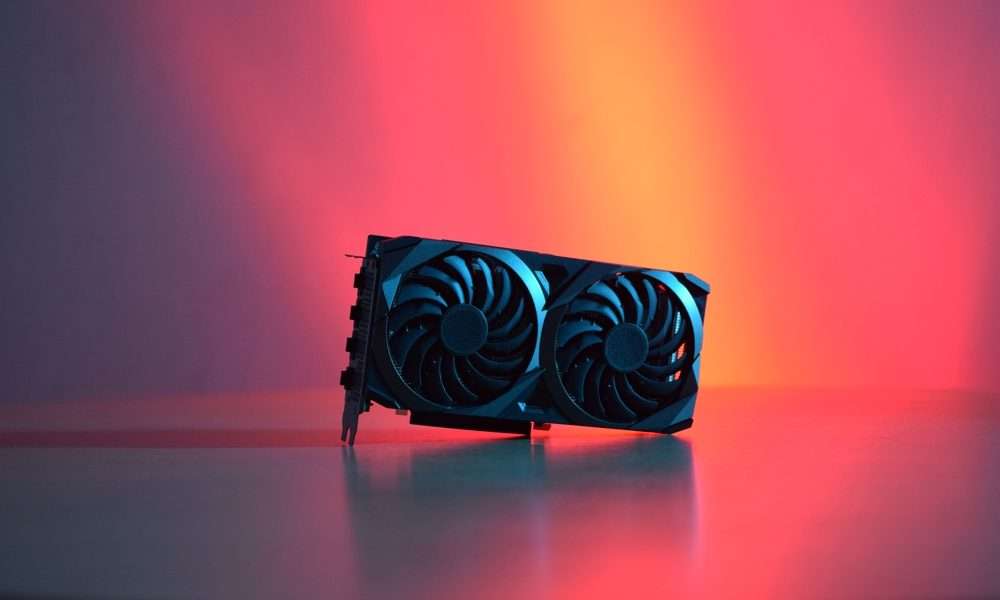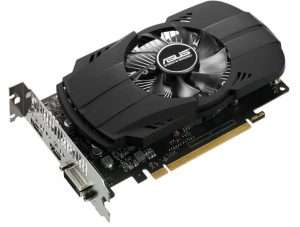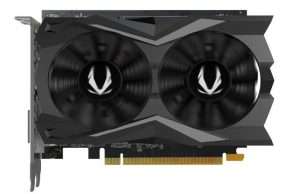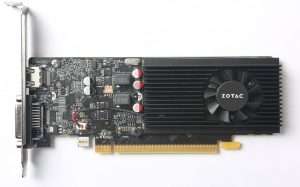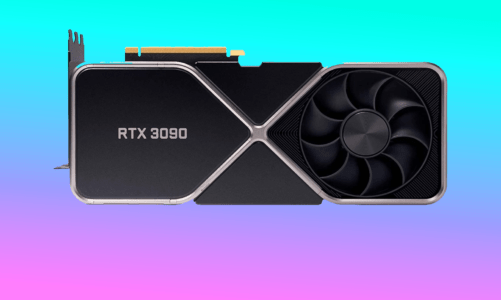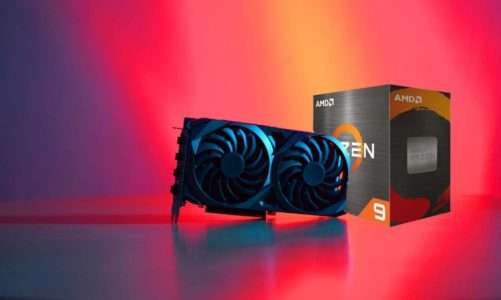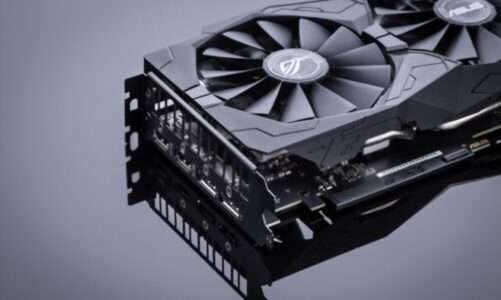Quick Navigation
GPU Republic is reader-supported. We follow a strict editorial process and put hours of research into testing, reviewing, analyzing & comparing the best products that we can find so you can make the most informed decisions. In the event you choose to buy something from one of the links on our site, we may make a commission at no extra cost to you. Whatever products we recommend, it’s because we truly believe in them, not because of the small commission we may receive. Please don’t buy any of these products unless you actually think that it would fit your needs.
Although the last year has blessed us with a slightly lower price tag on our favorite graphics compared to the previous year, it’s still hard to find a GPU that delivers decent performance for a lower price. Especially, when it comes to building a cheaper gaming PC, everyone looks for a GPU that costs as low as $200 without compromising the performance.
As more cards are available now in the stock as compared to the last two years, the prices have started to dip down slowly on marketplaces like Amazon and eBay. Thanks to third-party manufacturers like ASUS, ZOTAC, GIGABYTE, and MSI who have done their part in making as many cards available to end-users.
Although the prices are falling down, it’s still hard for users with tight-budget to get their hands on upper mid-range cards from Nvidia and AMD.
If you want to spend no more than $200 on a graphics card, then we’ve filtered some of the decent options from Nvidia and AMD for you. With these under $200 graphics cards, you can play most games at 720p settings if not 1080p.
A Quick Comparison
| Graphics Card | Video Memory | Boost Clock Speed | Cores | Power Requirement |
| ASUS GeForce GTX 1050 Ti | 4GB GDDR5 | 1392 MHz | 768 | 300W |
| PowerColor AMD Radeon RX 550 | 4GB GDDR5 | 1071 MHz | 512 | 400W |
| Gigabyte Radeon RX 5500 XT | 4GB GDDR6 | 1845 MHz | 1408 | 400W |
| ZOTAC Gaming GeForce GTX 1650 Super | 4GB GDDR6 | 1725 MHz | 1280 | 350W |
| ZOTAC GeForce GT 1030 | 2GB GDDR5 | 1468 MHz | 384 | 350W |
So, without wasting further time, let’s dive into our list:
The Best Graphics Cards Under $200 Reviewed
Here are the top picks to consider:
ASUS GeForce GTX 1050 Ti – The Overall Best GPU under 200 Dollars
Video Memory: 4GB GDDR5 | Boost Clock Speed: 1392 MHz | CUDA Cores: 768 | Memory Interface: 128-bit | Video Output: x1 DVI-D, x1 HDMI 2.0, x1 DisplayPort 1.4 | PSU Needed: 300W
Reasons to Buy:
The ASUS GeForce GTX 1050 Ti is an affordable graphics card with all the needed ingredients to game at 720p resolution. It has enough VRAM to tackle complex content creation workload and has the most advanced video output ports to connect it with higher refresh rate screens.
Furthermore, it does not needs any external power connector from your PSU, so this makes it an ideal choice for PCs with irreplaceable or low-wattage PSUs.
The GeForce GTX 1050 Ti belongs to Nvidia’s Pascal architecture era and is too old to compete with the current-gen graphics cards. However, it still delivers considerable performance in entry-level gaming and content creation workloads. Especially, if we talk about playing five years old titles at high settings, then this might be the right type of card to go with.
With 4GB of VRAM, the ASUS GeForce GTX 1050 Ti meets the minimum specs of most AAA titles of today. One game that we still love playing on this graphics card is the GTA V. We don’t know how but it looks like this GPU is pre-tuned for GTA V to deliver smoother frame rates.
The ASUS GTX 1050 Ti knocks out many entry-level cards when we talk about the price to performance ratio. For just under $200, you get your hands on a graphics card that uses less power and delivers exceptional performance in 720p gaming.
Where the prices of most GPUs are above MSRP level, the ASUS GTX 1050 Ti fits in the budget equation of many users. If you are upgrading from GTX 750 Ti, GTX 960, or standard GTX 1050, then you’ll surely witness higher performance with this card. The GTX 1050 Ti beats its competitor, the AMD RX 480 4GB in many games at 720p resolution.
We managed to play a few games with this card like Modern Warfare 3, GTA V, PUBG, Fortnite, and Need for Speed: Heat at 720p (high). There were no lags at all, and the frame rates were well above 60fps most of the time. With 768 CUDA Cores and a boost clock speed of 1392 MHz, the ASUS GTX 1050 Ti is no doubt a faster and most affordable card of its kind.
PowerColor AMD Radeon RX 550 – Best Value GPU for the Money
Video Memory: 4GB GDDR5 | Boost Clock Speed: 1071 MHz | Stream Processors: 512 | Memory Interface: 128-bit | Video Output: DL DVI-D/ HDMI/ DisplayPort | PSU Needed: 400W
Reasons to Consider:
The PowerColor AMD Radeon RX 550 is one of the decent graphics cards for a budget gaming build. 4GB GDDR5 memory and a boost clock speed of 1071 MHz make this chip a great deal for everyday content creation tasks and light gaming.
To be honest, there are a few graphics cards on the market that give you the most value for your money. The PowerColor RX 550 is built on the AMD’s GCN 4 architecture which if we compare it with the latest RDNA 2, wouldn’t be a fair thing to do.
Although being fueled by an older architecture, the RX 550 still holds some legacy in playing AAA titles at lower settings. Just like the Nvidia’s GTX 1050 Ti chip, this one also has 4GB of VRAM and DirectX 12 to meet the minimum specs of modern-day games.
However, when it comes to playing games at 720p settings, the Nvidia GTX 1050 Ti takes advantage of this card. And it’s clearly due to the fact that GTX 1050 Ti holds more CUDA cores and boost clock speed as compared to RX 550.
But there’s one thing that makes the RX 550 stand out, and that is the FreeSync. Even though it’s an older card, the AMD’s FreeSync allows you to connect this graphics card with higher-refresh rate monitors while preventing screen tearing or artefacts issues.
Now, let’s talk about the performance of PowerColor RX 550 in gaming. As we know this is an entry-level graphics card, so you cannot expect it to perform similar to that of an RX 580 or RX 590. Again, we threw some famous game titles PUBG, Fortnite, GTA V, and Minecraft to see how this chip handles them.
To our surprise, the RX 550 handled all of these games pretty well. At 720p high settings, all of these games were easily playable without any lags. And to push it further, we scaled the resolution up to 1080p settings in GTA V. Throughout the gameplay, the RX 550 delivered around 55fps to 60fps.
To sum up, the PowerColor RX 550 is a great deal for light gaming and content creation. You can also use this graphics card for photo or video editing as well. It’s cheaper than most of the similar specs graphics cards on the market.
Gigabyte Radeon RX 5500 XT – A Faster Yet Low-Budget RDNA Graphics Card
Video Memory: 4GB GDDR6 | Boost Clock Speed: 1845 MHz | Stream Processors: 1408 | Memory Interface: 128-bit | Video Output: Display Port 1.4 x 3, HDMI 2.0b x 1 | PSU Needed: 500W (Needs x1 8-pin power connector)
Reasons to Consider:
The RX 5500 XT is built on the latest 7nm RDNA architecture and is available in 4GB and 8GB versions. Armoured with powerful specs, this graphics card delivers impressive performance in 1080p gaming and professional content creation at a lower price.
Finally, we have the most affordable AMD Navi graphics card, the RX 5500 XT on our list. Its MSRP price at the time of launch was $169, but right now it’s being sold for a slightly higher price. It’s one of those cards that compete with the Nvidia’s GTX 1650 and GTX 1660 in many games. In some AAA titles, the 8GB version of this card performs 10% better than the GTX 1600 cards.
With a boost clock speed of 1845 MHz, the RX 5500 XT gives you a nice boost in playing games at a higher resolution. Both the 4GB and 8GB versions of this card are built on the 128-bit memory interface and have the same specs apart from the VRAM.
So, let’s move on to the performance of this graphics card in AAA games. Like we’ve said earlier, it’s one of those budget chips that can let you play most games at 1080p medium settings if you have the 4GB version. But for playing AAA titles at 1080-ultra settings, you’ll have to go with the 8GB version of this card.
The 4GB version of RX 5500 XT is able to achieve 60fps at 1080p medium settings. It also depends upon the game that you’ll play on this graphics card. With Fortnite and PUBG, this chip can even push frame rates further higher up to 90fps. The truth is, the RX 5500 XT delivers way better performance than the Nvidia’s GTX 1650 in a few titles.
But in titles like Battlefield V, Forza Horizon 4, and Shadow of the Tomb Raider, the performance of RX 5500 XT is similar to that of the GTX 1650.
In Far Cry 5, the RX 5500 XT delivered around 70fps at 1080p medium-high settings. Whereas in the Shadow of the Tomb Raider, the frame rates were swirling around 60fps most of the time. In Forza Horizon 4, the RX 5500 XT climbed over 100fps without any issue.
The reason we’ve tested this card at 1080p resolution and not above is due to the fact that budget-oriented gamers barely scale the resolution above 1080p as reported by Steam. Even today, people still like playing games at 1080p rather than 1440p or 4K.
All in all, the Gigabyte RX 5500 XT is the most wallet-friendly choice for gamers looking for a 1080p gaming card under the $200 ceiling. This card shows amazing performance over the previous Polaris architecture chips.
There’s a little price difference between the 4GB and 8GB versions of this card, so we highly recommend you to go with the latter one if you need better performance. Bear in mind that this GPU needs an x1 8-pin power connection from your PSU, so make sure you have a good wattage power supply in your system.
ZOTAC Gaming GeForce GTX 1650 Super – Reliable $200 Category GPU
Video Memory: 4GB GDDR6 | Boost Clock Speed: 1725 MHz | CUDA Cores: 1280 | Memory Interface: 128-bit | Video Output: Display Port 1.4, HDMI 2.0b, DVI-D | PSU Needed: 350W
Reasons to Consider:
The Zotac GTX 1650 Super is one of the most performance-oriented cards on a budget. Fueled by Nvidia’s Turing architecture, the GTX 1650 Super is capable of delivering smooth performance in 1080p gaming. It draws less than 100W power out of your power supply making and is compact enough to fit into tight PC cases.
A long time ago, Nvidia improved the performance of their mid-range and higher-end lineup with the addition of “Super” graphics cards. Later on, this was moved down to the GTX 1600 line-up as well. The Zotac GTX 1650 Super is one of the cards that shows a holds a bit more VRAM and clock speed as compared to the standard “GTX 1650” version.
The Zotac GTX 1650 Super is backed by Nvidia’s Turing architecture and holds 4GB GDDR6 video memory to play games at a higher resolution. By having enough video memory onboard, the Zotac GTX 1650 Super shows up as a solid choice for 1080p gamers.
As compared to the Gigabyte’s RX 5500 XT, the Zotac GTX 1650 Super delivers a bit more performance in AAA gaming. Especially, when it comes to playing games at 1080p ultra-settings, the Zotac GTX 1650 easily climbs over 60fps markup.
The Gigabyte RX 5500 XT (4GB) at 1080p ultra-settings struggles to deliver 60fps due to its lower VRAM limit. However, the 8GB version of the Gigabyte RX 5500 XT easily wins over the Zotac GTX 1650 Super when it comes to higher frame rates at 1080p ultra settings. Again, this is due to the VRAM edge that RX 5500 XT 8GB has over the Zotac GTX 1650 Super 4GB.
At 1080p ultra settings, the Zotac GTX 1650 Super delivers more than 90fps in titles like Fortnite, PUBG, GTA V, and Final Fantasy XIV. However, when it comes to more demanding titles like Metro Exodus, Shadow of the Tomb Raider, and Borderlands, then the frame rates range between 45 fps and 60 fps.
In general, the GTX 1650 Super shows 10% more performance as compared to the normal GTX 1650 card. It looks like the addition of more CUDA cores and memory bandwidth has really made this card a solid 1080p gamer choice.
But if we compare the Zotac GTX 1650 Super with Gigabyte’s RX 5500 XT GPU, then it’s evident that the RX 5500 XT throws more frame rates at 1080p ultra settings. Maybe the 4GB VRAM on this graphics card isn’t enough to handle graphically intense AAA games. But you can still play your favourite AAA games if stick to the 1080p medium settings, not the ultra settings.
Overall, it’s the best per-watt performance graphics card to have these days. For just under $200, you get a GPU that delivers a decent 1080p gaming experience and draws less energy out of your power supply. However, if you need a better card than this one, then our recommendation would be to go with GTX 1660 Super which holds more VRAM and memory bandwidth to deliver a solid 1080p experience.
ZOTAC GeForce GT 1030 – Cheapest Option under $200
Video Memory: 2GB GDDR5 | Boost Clock Speed: 1468 MHz | CUDA Cores: 384 | Memory Interface: 64-bit | Video Output: DVI, HDMI | PSU Needed: 300W
Reasons to Consider:
The GT 1030 is the cheapest option to play games at 720p resolution. Any card below this would not perform as good as the GT 1030. Moreover, it’s a low-form factor card (single-slot), which makes it easier to fit inside mini-ITX or SFF PC cases. Also, the GT 1030 has a maximum TDP of 30W, meaning a low-wattage PSU would be enough to fuel it.
The Zotac GT 1030 is a GPU that sits on the sweet spot between price and performance. The only thing that might keep gamers away from it would be 2GB of VRAM. As modern games need you to have at least 4GB of VRAM for better gameplay, having just half of that amount on GT 1030 looks outdated.
But numbers are just numbers, you cannot just look at the number and decide about the performance of a GPU unless you test it. Despite having half the specs compared to other cards on our list, the Zotac GT 1030 delivers decent performance in games titles like Minecraft, Roblox, Fortnite, GTA V, and PUBG at high settings.
In Fortnite, the GT 1030 gives a good boost of frame rates over 120fps at 720p resolution. Whereas in Minecraft, the chip goes well beyond 150+ fps at 720p. We tried to go for 1080p in these games, but the limited amount of VRAM on GT 1030 limited our experience. Although the games were playable, we lost half of the frame rates that we had with 720p settings.
Well, it’s a good-budget GPU to tackle entry-level gaming, but keep it away from high-end AAA gaming. If you want to get rid of your integrated graphics, then upgrading to a graphics card like GT 1030 would be the best option. Its smaller footprint makes it viable for mini-ITX or SFF builds where there is limited space for a GPU.
Rounding up, the Zotac GT 1030 is the right pick for someone who is low on budget and needs a graphics card that can handle content creation workload and light gaming. The Zotac GT 1030 is an energy-efficient GPU that draws as low as 30W from your PSU and does not need any external power connector as well. A no-go for AAA gaming, but a good-to-go card for entry-level gaming and computing.
How We Tested
To test the performance of graphics card, our criteria is simple, put a GPU to its limit in gaming and see how much frame rates it’s capable of delivering at different resolutions.
It’s better to put GPU to real tests instead of running benchmark scores. And we forgot to tell you that there’s a lot of talk going about third-party GPU manufacturers tuning the chips for getting better benchmark scores. From this point on, we will put more efforts in playing different games on a card rather than relying just on the benchmarking systems.
So, the test system that we used to test the GPUs on our list has the following specs:
- Motherboard: Gigabyte Z390 Aorus Xtreme
- RAM: Corsair 16GB (8×2) DDR4
- Power Supply: Toughpower 750W Gold
- Display: MSI LCD Monitor IPS 27 “Gaming Optix
Factors to Consider Before Buying
There are certain things to keep in mind before making your decision:
AMD or Nvidia
It’s completely up to you to go with the brand you want. However, Nvidia is known to produce graphics cards with higher performance and features as compared to AMD. But Team Red is also doing its best to tackle Team Green by introducing better chips in the near future.
At the moment, Nvidia has won back its lost legacy from AMD by throwing graphics cards equipped with ray-tracing and DLSS 2.0. But as our budget is to look for under$200 well-performing graphics cards, it’s better to keep ray-tracing and DLSS on one side.
In terms of budget, AMD cards are cheaper than Nvidia’s similar spec cards. Even in our guide, you’ll find the RX 5500 XT beating Nvidia’s GTX 1650 in many games. So when it comes to saving a few more bucks, then go with AMD instead of Nvidia. However, if you need higher fps performance, then Nvidia will definitely give you an edge.
Dimensions
You have to look for a GPU that would fit inside your case without any problem. When individuals look for a low budget graphics card, there are high chances that they have a PC case where there is limited room for installing a dedicated graphics card.
Make sure you choose a graphics card that occupies less space on your motherboard. It’s better to look for single-slot graphics cards as compared to dual slot cards. Only go for 2-slot width GPUs if there’s enough clearance inside your PC case.
Cooling
Although you won’t find that level of cooling on a low-budget graphics card as you’ll find on a mid-range or high-end card, it is still important to consider cooling as an important factor when buying a GPU. As a GPU runs hotter, its performance goes down as well. So you have to keep an eye on the cooling mechanism of the GPU you need.
Graphics cards under the $200 budget cap usually come with one and in rare cases two fans. In most cases, either you’ll find a blower fan or an axial fan on a graphics card. Axial fans are more efficient in cooling your graphics card as compared to blower fans.
But down at this budget, it’s hard to find a graphics card with an axial fan design. But as the specs on low-budget graphics cards aren’t energy-demanding, a blower fan is also enough to keep your GPU cooler at peak load.
Video Memory
Let’s get straight to the point, the more VRAM you have, easier it would be for you to plunge into higher resolutions. Nearly every AAA titles in the market need you to have at least a graphics card with 4GB of video memory. Yes, 4GB is the bare minimum VRAM you need to have these days if you want a decent gaming experience.
Scaling the resolution higher than 1080p would eat more VRAM. If you want to play AAA titles at 1440p, then it’s better to go with a 6GB or 8GB graphics card.
A secondary factor to add under the VRAM is the type of video memory. Most cards are available right now with GDDR5 or GDDR6 memory type. If you have to pick between a GDDR5 and GDDR6 when there’s a little price difference, then go for GDDDR6 as it gives you higher memory bandwidth and clock speed as compared to GDDR5.
Verdict
Now comes the difficult part of the story, which graphics card you should go with? If we had to pick from one of these, then it would be Gigabyte Radeon RX 5500 XT. And there are two reasons for choosing this graphics card. One reason is that it sits under $200 budget limit and the second one is the latest 7nm RDNA architecture. This chip has more memory bandwidth and clock speed to deliver decent performance in 1080p gaming.
The RX 5500 XT is more of a all-rounder graphics card under a tight budget. It beats Nvidia’s GTX 1650 is most titles and lets you play most games at 1080p ultra settings.
But it’s completely up to you as everyone has its own intentions for buying a graphics card. If you just need a card that can deliver better performance than your integrated graphics card, then the Zotac GT 1030 would be enough for that purpose.

Hi, I’m the author and founder of this blog. I have more than 10 years of experience in the industry. Throughout my journey I’ve tested and reviewed hundreds of graphics card for custom PC builds. I believe my knowledge and experience will help you choose the card that really falls to your needs and budget.
